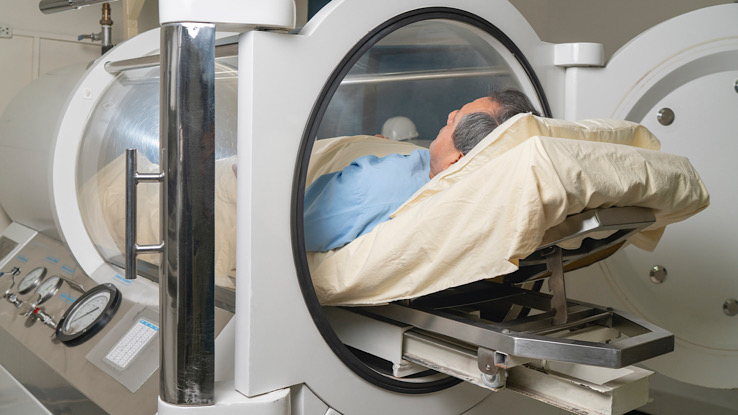
Hyperbaric chambers can treat various health conditions in medical centers and hospitals worldwide. They are also being used to find other ways to revolutionize medicine and forms of healing. Hyperbaric chambers work by increasing the levels of oxygen in your blood and tissue. This can help treat some medical problems, such as carbon monoxide poisoning and non-healing wounds. But too much oxygen can also be dangerous, so you should only usehyperbaric chambers under the guidance of your doctor. So, what is a hyperbaric chamber, how does it work, and what does it help to treat? Keep reading as we discuss some of the most commonly asked questions about this form of oxygen therapy.
What Is a Hyperbaric Chamber?
In simple terms, a hyperbaric chamber is a highly pressurized room used for healing wounds and illnesses using oxygen. The way these chambers work is by providing 100% oxygen they pump into the room at high pressure. This is more than the normal 21% oxygen found in the air. The reason for using 100% oxygen is to get blood that is rich in oxygen to any of the tissue in your body that may be low in oxygen.
How Does a Hyperbaric Chamber Work?
The hyperbaric chamber works in three main ways:
- It works by bringing the cells in your body to a state of oxygenation, which just means that your cells have exposur to adequate oxygen levels.
- It helps with a process called neovascularization, which is the formation of new blood vessels.
- It helps to speed up the cycle of healing for chronic wounds by decreasing inflammation.
Types of Hyperbaric Chambers
There are two types of hyperbaric chambers – monoplace and multiplace. In other words, they are single-person and multi-person options.
Monoplace Chamber
A monoplace chamber is just for one person. It resembles a magnetic resonance imaging or MRI scanner but is essentially a large plastic tube. This tube is pressurized slowly with pure oxygen.
Multiplace Chamber
Multiplace chambers can fit two or more people at one time. With this option, you would be breathing in pure oxygen through masks, and a nurse or technician can be inside the chamber with you during the treatment. The duration and frequency of treatment depends on your diagnosis and any current symptoms you might be experiencing.
What Can Hyperbaric Chambers Treat?
Although the first use of air therapy in any form was in 1660, it wasn’t until 1860 that the very first hyperbaric chamber was made in Canada. Many people associate hyperbaric chambers with treating divers for decompression sickness or treating carbon monoxide poisoning. While it is used for these illnesses, the first use of hyperbaric chambers in the U.S. was actually for “nervous disorders.”
Generally speaking, hyperbaric oxygen therapy can be used to treat many different health conditions. More specifically, hyperbaric oxygen therapy is FDA approved to treat the following:
- Cyanide poisoning
- Carbon monoxide poisoning
- Decompression sickness
- Delayed radiation injuries
- Air embolism
- Severe anemia
- Sensory hearing loss
- Ischemic vision loss
- Gas gangrene
- Diabetic wounds
- Non-healing wounds
- Crush injuries
- Severe burns
- Bone infections
- Skin graft failure
Regardless of your specific illness, a certified physician will always have to determine if this form of therapy is a good fit for you.
Precautions for Hyperbaric Chambers
Although hyperbaric chambers have been used to treat multiple injuries and health conditions, there has been some controversy surrounding the practice; mainly regarding its use for unapproved conditions.
The FDA approves only a handful of indications for hyperbaric chamber treatment. Unapproved conditions include migraines, AIDS, asthma, cancer, and Parkinson’s disease, among other things. The use of 100% oxygen can be dangerous when used for unapproved conditions like these. You should not undergo treatment for any condition that your doctor does not prescribe.
Some side effects of hyperbaric oxygen therapy to be aware of are:
- Sinus damage
- Ear damage
- Lung damage
- Oxygen poisoning
- Fatigue
- Lightheadedness
- Temporary vision changes
What’s the Next Step?
Your doctor may decide that you are a good candidate for hyperbaric oxygen therapy for various reasons. If you have one of the conditions listed above, you can speak with your doctor about whether this would be a good treatment for you. You should ask your doctor for recommendations of an approved hyperbaric chamber therapy center and not go to any unapproved center. You should also not pursue hyperbaric chamber therapy unless prescribed by your doctor.
Reference List:
- “Hyperbaric Oxygen Therapy: Get the Facts” via FDA
- “Hyperbaric Oxygen Therapy” via Johns Hopkins Medicine
- “A General Overview on the Hyperbaric Oxygen Therapy: Applications, Mechanisms and Translational Opportunities” via Medicina
- “Hyperbaric oxygen treatment: Clinical trial reverses two biological processes associated with aging in human cells” via ScienceDaily.
- “Hyperbaric Oxygen Therapy: Exploring the Clinical Evidence” via Adv Skin Wound Care.





